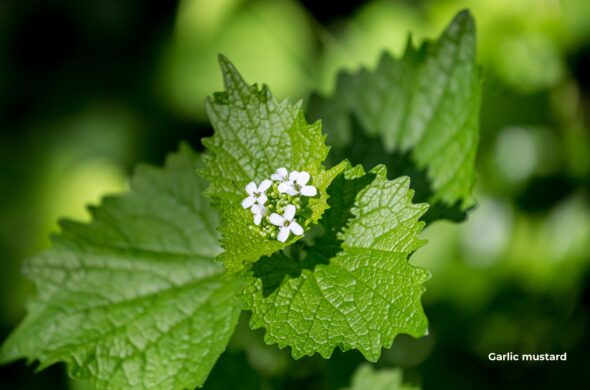Plants that are invasive in our ecosystem are as diverse as those that are desirable. While we work on both garlic mustard and poison hemlock at the same time of year, they are very different plants.
All parts of poison hemlock (leaves, stem, fruit, and root) are poisonous. In ancient Greece, poison hemlock was used to poison political prisoners! Domestic animals like sheep, cattle, swine and horses are poisoned by eating small amounts of the plant. Poison hemlock resembles a tall Queen Anne’s lace plant with multiple flower heads. If you see a plant matching this description, steer clear, because touching poison hemlock can cause skin irritation.
Unlike poison hemlock, is believed that garlic mustard was introduced to North America as an edible green with medicinal purposes. It is one of the few invasive herbaceous species able to dominate the forest floor. The plants most affected are those that grow in the spring and early summer season.
Both of these plants behave invasively, crowding out beneficial native species.
Both garlic mustard and poison hemlock are biennial plants, meaning that their life cycle takes place over the course of two years. In the first year, they stay low to the ground while developing roots, and in their second year they send up larger stems with flowers and produce seeds. Even though one is edible and one is poisonous, their similar growth pattern leads us to attack them at the same time of year!
When the Team for Healthy Parks, Park Stewards and volunteers work together, we can mitigate a variety of detrimental plants and make our urban green spaces sustainable and vibrant!

Find something similar: News









